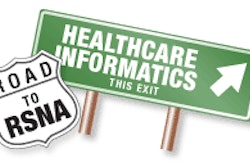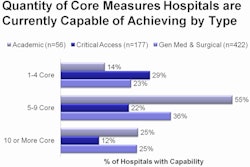Wednesday, December 1 | 11:20 a.m-11:30 a.m. | SSK09-06 | Room S402AB
How variable is the dose of the scout image of a CT scan? How useful is it as a diagnostic tool to radiologists? Find out what researchers at the University of Maryland in Baltimore discovered after conducting a survey of its radiologists who work at five hospitals.Eliot Siegel, MD, chief of radiology services at the Baltimore Veterans Affairs Medical Center (VAMC) and professor of nuclear medicine and associate vice chair of Maryland's radiology department, previously conducted a study that established that the dose reduction of a CT scout image could be reduced as much as tenfold without compromising visualization of overall landmarks.
The radiation dose of a CT scout image is equivalent to approximately 10 chest x-rays, and it can represent as much as 20% or more of the total radiation dose of a CT exam. The survey sought to determine if it would be possible to decrease the dose used to create the scout image, and to establish protocols that would improve consistency for the dose among the affiliated hospitals.
The survey, conducted in February 2010, queried radiologists about their frequency of looking at the scout image while interpreting a CT scan. It also obtained the actual dose delivered by multiple CT scanners at each of the five hospitals.
The survey revealed that the CT scout image had minimal diagnostic value. Thirty-seven percent of the radiologists reported that they never looked at it, and an additional 26% seldom did. There was variability in the dose used by more than 50%.
Siegel told AuntMinnie.com that as a result of the survey, protocols are being modified at the Baltimore VAMC. "We believe that we can reduce overall radiation exposure substantially by utilizing each CT scanner's lowest allowable protocol, without incurring any loss of clinically useful information," he said.
At this scientific session on quality and safety, he will be recommending that others do so as well.



















